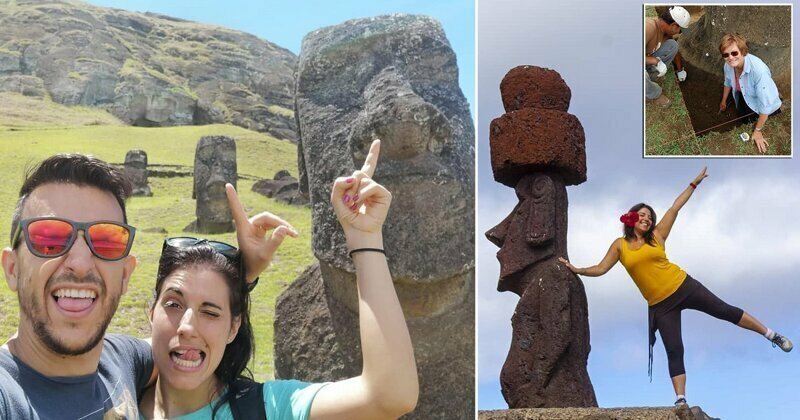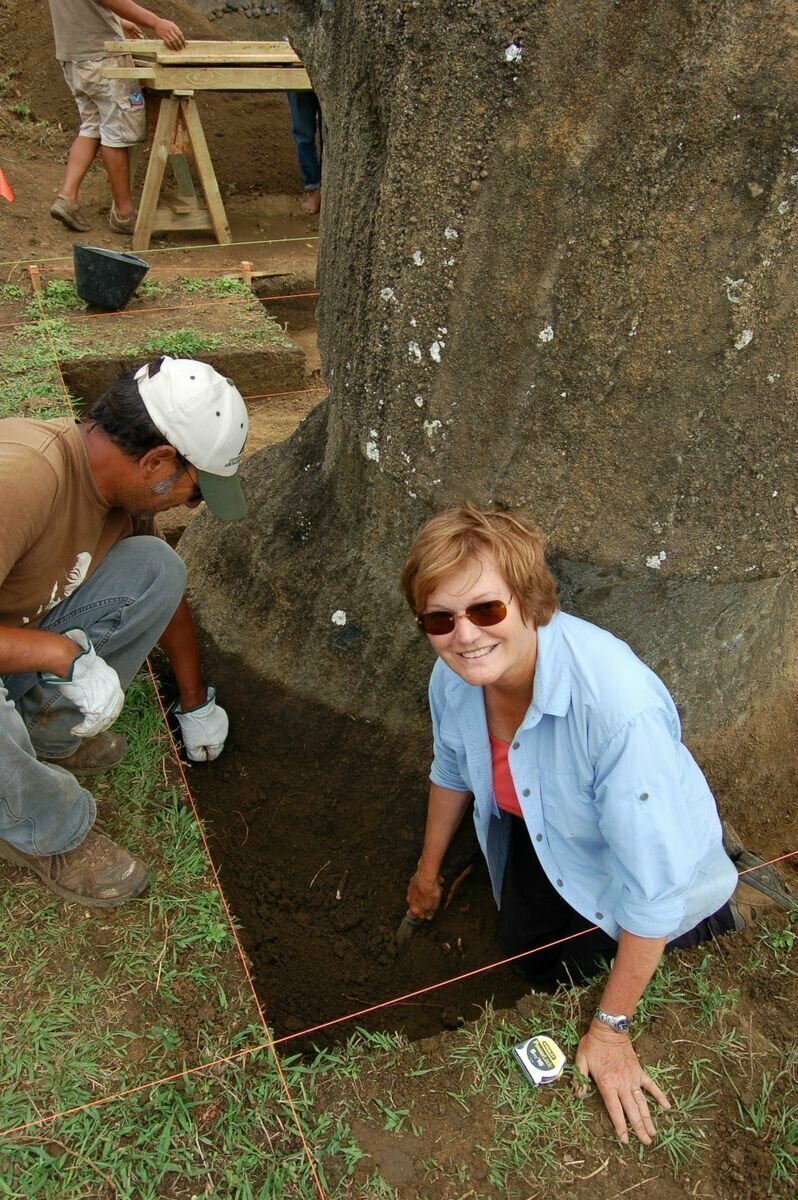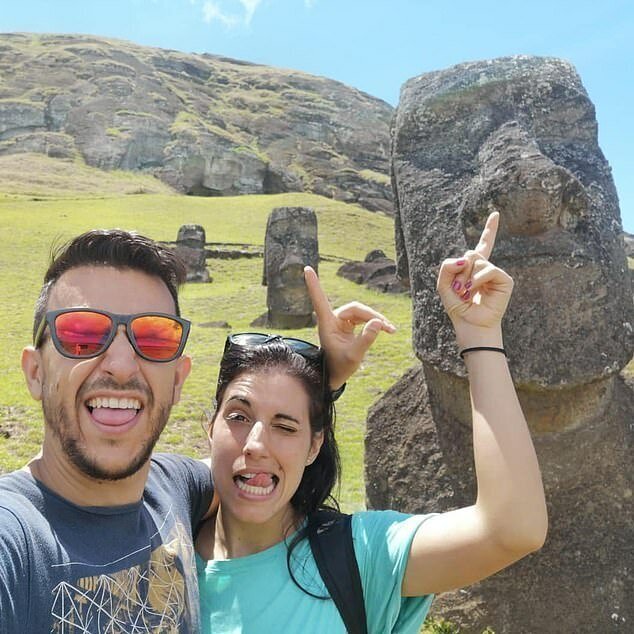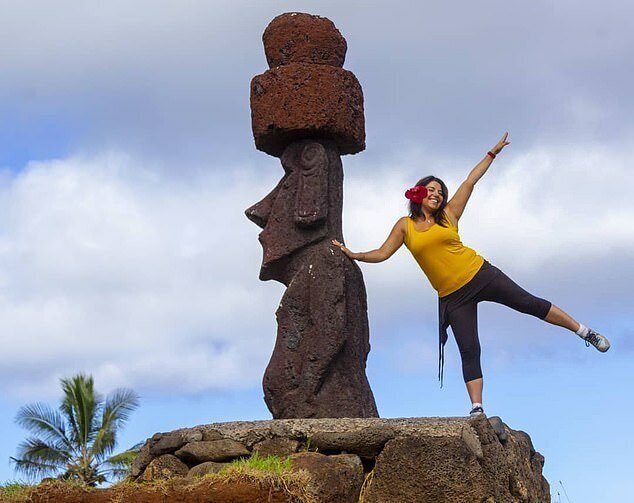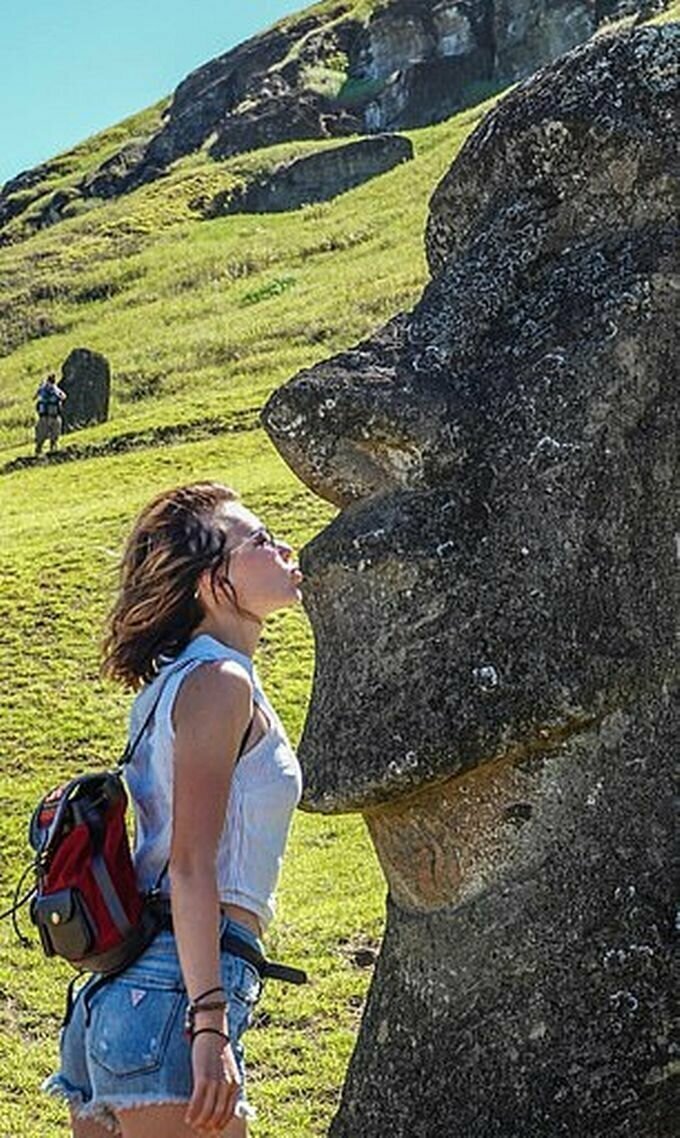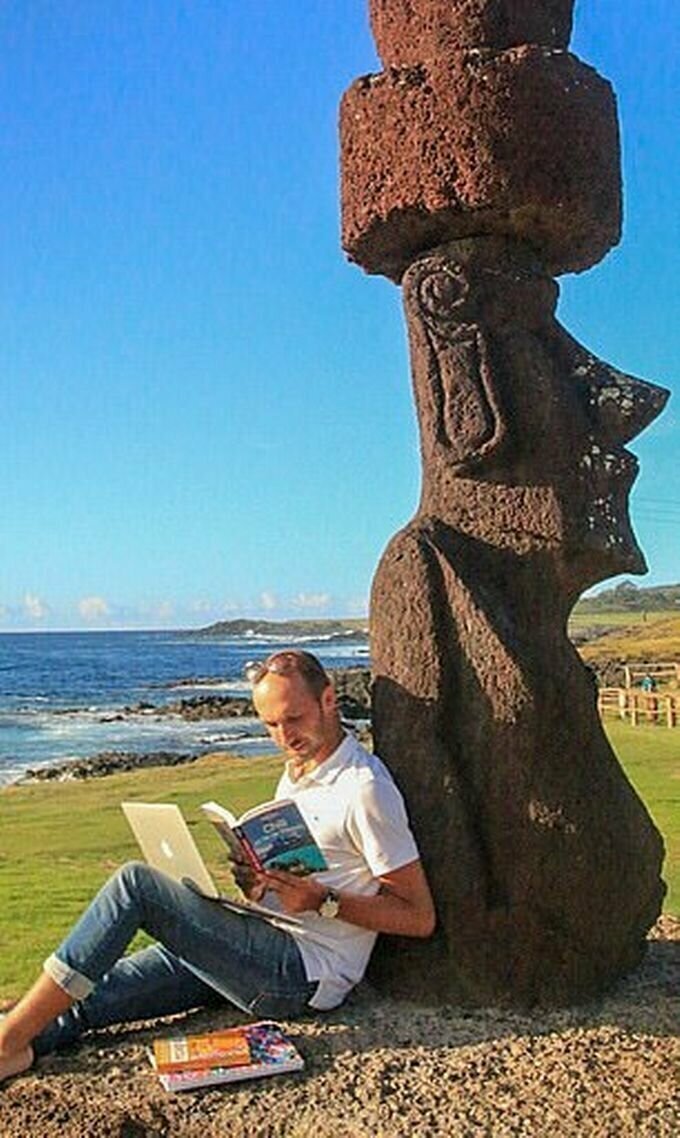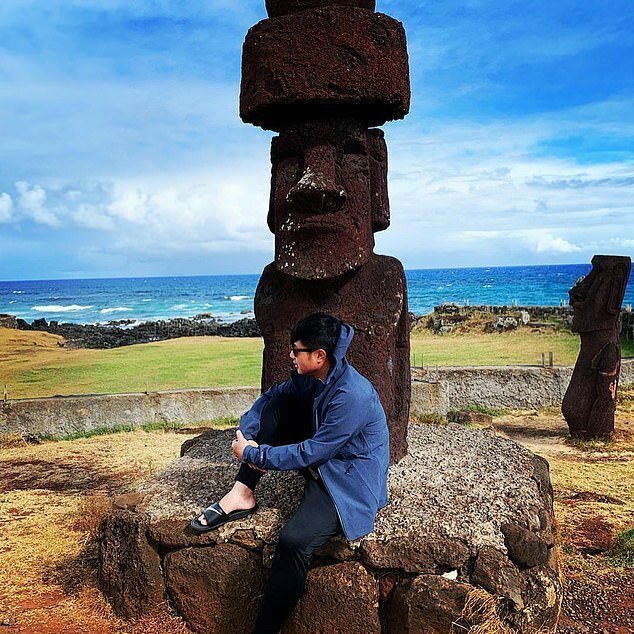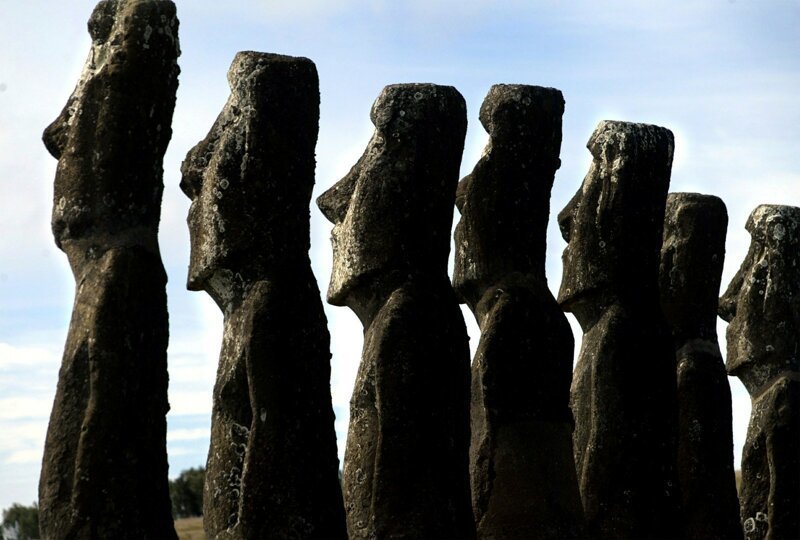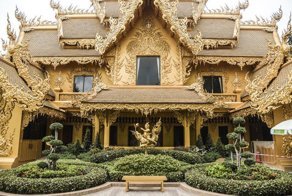0
8
An archaeologist has warned that Easter Island is under threat from selfie-loving tourists who trample over sacred ground and monuments just so they can take photographs of themselves picking the noses of its ancient stone statues.
Archaeologist Jo Anne Van Tilburg has worked on Easter Island for decades - studying the famous moai statues and the living descendants of their creators
Jo Anne Van Tilburg, from the University of California Los Angeles, attacked the insensitive and disrespectful behaviour of the visitors who flock to visit the moai - famous stone monuments carved between 1100 and 1400 AD.
Van Tilburg told Newsweek that the locals are struggling to cope with an influx of tourism, which saw some 150,000 people visit the remote Chilean territory last year.
This is compared to around 2,500 yearly visitors in the early 1980s.
The island, also known as Rapa Nui, only has around 5,700 permanent residents.
'By Rapa Nui standards, on an island where electricity is provided by a generator, water is precious and depleted, and all the infrastructure is stressed, 150,000 is a mob,' she said. But even more disheartening are the actions of some of the tourists during their visit.
Van Tilburg told Newsweek that the locals are struggling to cope with an influx of tourism, which saw some 150,000 people visit the remote Chilean territory last year.
This is compared to around 2,500 yearly visitors in the early 1980s.
The island, also known as Rapa Nui, only has around 5,700 permanent residents.
'By Rapa Nui standards, on an island where electricity is provided by a generator, water is precious and depleted, and all the infrastructure is stressed, 150,000 is a mob,' she said. But even more disheartening are the actions of some of the tourists during their visit.
Van Tilburg said many visitors to the island seem more interested in taking selfies picking the statues' noses (above) than learning about its history and culture
People 'climb on the moai, trample preserved spaces and sit on top of graves,' in service of getting the right selfie, Van Tilburg said
'Tourism of the sort experienced today has a very negative impact on the Rapa Nui sense of community,' Van Tilburg said.
People 'climb on the moai, trample preserved spaces and sit on top of graves'.
And they do so with just one aim - to line up the perfect angle for a selfie, often showing the travellers picking the noses of the moai, Van Tilburg said.
The archaeologist says this is problematic not only because it risks damaging the moai - which are already naturally deteriorating having stood for centuries - but because it also disrespects the sacred sculptures.
To the local community, the carved heads represent the ancient Polynesians' ancestors and their relationship with the gods.
And under Chilean law, the moai are considered part of the landscape and not just objects.
People 'climb on the moai, trample preserved spaces and sit on top of graves'.
And they do so with just one aim - to line up the perfect angle for a selfie, often showing the travellers picking the noses of the moai, Van Tilburg said.
The archaeologist says this is problematic not only because it risks damaging the moai - which are already naturally deteriorating having stood for centuries - but because it also disrespects the sacred sculptures.
To the local community, the carved heads represent the ancient Polynesians' ancestors and their relationship with the gods.
And under Chilean law, the moai are considered part of the landscape and not just objects.
Van Tilburg said local resources, including water, are straining under a recent wave of tourism - as some 150,000 people visited the island last year compared to 2,500 in the 1980s
Van Tilburg, who has has been conducting research on the island for 40 years, told Newsweek that she was troubled by a 'lack of genuine interest' in the history of the island its people.
'There is a lack appreciation for the Rapa Nui past,' she said. 'It seems that many wish only to insert themselves into history by taking a selfie with the timeless statues.
'We all need to step up, whether scientist or tourist, and do our fair share to preserve the past.
'Tourists can study and learn before they travel to the island. They can show proper respect for others. They can remove their egos—and their selfie sticks—from the landscape and learn to appreciate the past.'
'There is a lack appreciation for the Rapa Nui past,' she said. 'It seems that many wish only to insert themselves into history by taking a selfie with the timeless statues.
'We all need to step up, whether scientist or tourist, and do our fair share to preserve the past.
'Tourists can study and learn before they travel to the island. They can show proper respect for others. They can remove their egos—and their selfie sticks—from the landscape and learn to appreciate the past.'
The carved stone heads are sacred to the local community as they embody the spirit of their ancestors and their relationship with the gods
Under Chilean law, the moai are considered part of the landscape and not just objects
The Moai are monolithic human figures carved by the Rapa Nui people on Easter Island, between 1,250 and 1,500 AD.
All the figures have overly-large heads and are thought to be living faces of deified ancestors.
The 887 statues gaze inland across the island with an average height of 13ft (four metres).
Nobody really knows how the colossal stone statues that guard Easter Island were moved into position.
All the figures have overly-large heads and are thought to be living faces of deified ancestors.
The 887 statues gaze inland across the island with an average height of 13ft (four metres).
Nobody really knows how the colossal stone statues that guard Easter Island were moved into position.
Source:
Ссылки по теме:
- I Explored An Undiscovered Canyon In Kyrgyzstan, And Here Are 23 Pics Of It
- This White Temple In Thailand Is Both Heaven And Hell
- Scottish Man Decides To Cycle Across The Globe Solo But Finds A Stray Cat Which Accompanies Him
- The National Geographic’s Travel Photo Contest Is Over And Here Are The Winners
- Photographer Goes Around The World In Search Of The Most Beautiful Libraries
реклама


